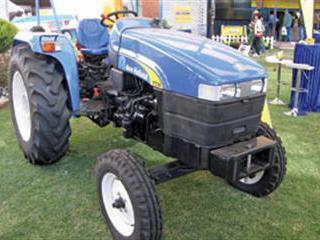Last week we covered the story of the super-breeder, Emma, owned by Johann Grobbelaar & Son, competitive members of the Sandton Racing Pigeon Club, which falls under the Transvaal Pigeon Federation. Thanks to a crop of superior pigeons in their lofts the partnership is highly successful in races.
High success rate of breeders
Not to take any honour away from the person in the second position, we note that there’s a winning points difference of almost 400 points in the all birds to count competition. his shows that Grobbelaar & Son bred and trained more superior individual pigeons than anyone in the 2007 federation results. E uropean champion fanciers say a 5% to 7% success rate of breeding good pigeons is the norm and individual superstars are bread at around 1% to 2% once in three to five years. But this partnership has bred the best bird in the club from 2003 to 2007. In 2005, they owned the top ten best birds in the club. hey scored within the top three champion points league positions of the federation in the short to middle and long distance in the single and all birds points categories. were crowned club champions of both Randburg and Sandton clubs.
Superior intelligence and will to win
No less than seven of the top 10 fanciers live east of Gauteng. The race routes for Gauteng are from the south to north/east. It’s a known fact that fanciers living in the northwest of Gauteng are disadvantaged by the prevailing south/north-westerly winds that force the birds to enter Johannesburg from an eastern angle. Fanciers residing in the west often see their pigeons returning from the east after escorting the eastern crop home before they break away to lofts in the west. What makes the Grobbelaars’ achievements so remarkable is that their birds often need to break away from the pack against the westerly winds and be much farther ahead from the rest of the field to score at the top.
Stamina and fighting spirit:
What makes Grobbelaar & Son’s birds so diverse is their capability in all kinds of weather conditions as well as in tough long distance racing. This is proved by the following outstanding results:
- The only bird back on race day in the club from Colesberg
- The only two birds back on race day in the club from Noupoort
- The only seven birds back on race day in the club from Middelburg (Cape).
The gene pool
Only pigeons with a pedigree history of multiple winners in strong competitions are good enough for the Grobbelaar & Son partnership. They also select direct offspring of super-breeders to grace the paternal and maternal side of their breeding plan. hey have had much success with mating half-brothers with half-sisters, a soft system of inbreeding which enables one to stick with the top birds in the family. Most of the lines have been line-bred with selective crossing and then bred back to key individuals. Birds from Dave Clausing and Jeff Houben were introduced later to strengthen the team in the faster races, although the gene pool is capable of performing in all weather conditions.
Resourceful training system:
This all proves that Grobbelaar & Son have devised a fool-proof training system for their pigeons, which works against the odds of a disadvantaged loft location, as well as the prevailing (south/north-westerly) winds. We will be discussing this system in an upcoming article. – Thomas Smit ([email protected] or call (011) 680 4778)). |fw









